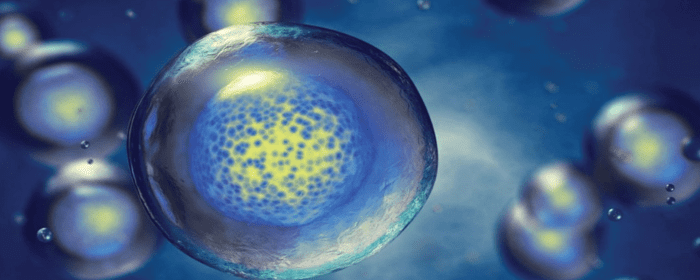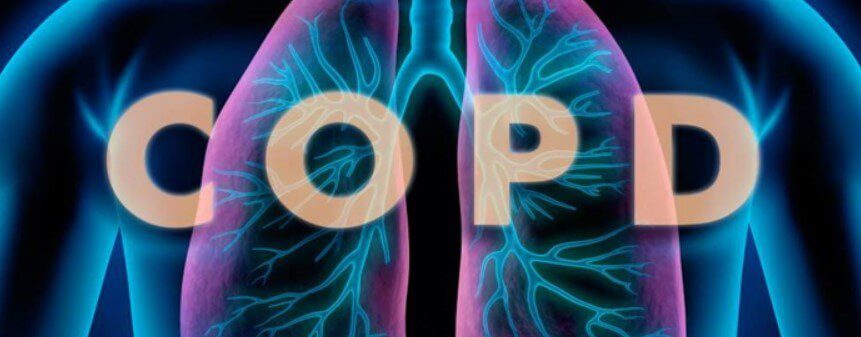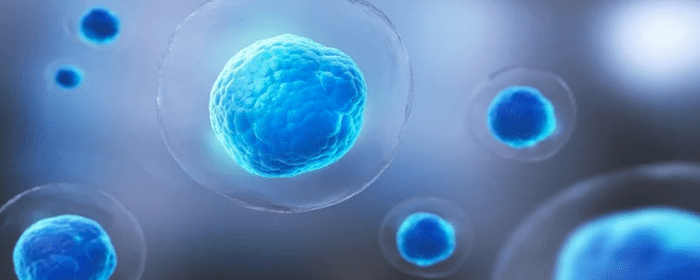
by Stemedix | Nov 6, 2023 | Multiple Sclerosis, Autoimmune, Chronic Pain, Musculoskeletal, Stem Cell Research, Stem Cell Therapy, Studies
Around the world, an estimated 1.8 million people live with multiple sclerosis. This autoimmune condition is chronic and can affect your life expectancy. The right treatment options, however, may impact the outcome you can expect. Learn about multiple sclerosis life expectancy and how the latest treatments help.
Understanding Multiple Sclerosis
Multiple sclerosis is a chronic autoimmune condition in which your immune system mistakenly attacks the sheaths that surround and protect the nerves in the spinal cord and brain, called the myelin. A damaged myelin interferes with the signals your brain sends to other parts of your body.
Symptoms of multiple sclerosis include:
- Fatigue
- Muscle weakness
- Muscle spasms
- Changes in gait
- Loss of coordination or balance
- Numbness or tingling in arms or legs
The causes of multiple sclerosis vary and are not always clear. They include being exposed to certain viruses or bacteria. People who had particular infections, like Epstein-Barr exposure, are more likely to develop MS. Other causes may be your environment, genetic mutations, and even how your immune system functions.
Diagnosing Multiple Sclerosis
Getting an accurate diagnosis is one of the most crucial steps if you have multiple sclerosis. A definite test has not been developed for MS, but the symptoms you experience will lead your doctor to perform a physical exam, take blood, and get imaging tests like MRIs.
MRIs can catch any lesions in your spinal cord or brain. These lesions develop as the disease damages the myelin. Your doctor may also perform a spinal tap.
If these tests don’t offer a definite diagnosis, you may have to undergo an evoked potentials test. This test checks for nerve damage by measuring electrical activity in the spinal cord and brain.
Multiple Sclerosis Life Expectancy: Factors to Consider
Newly diagnosed patients with MS who don’t have severe disabilities have a life expectancy of 30 years or more, but lots of factors play a role in determining this number. Your unique circumstances impact life expectancy.
Disability Status
The Expanded Disability Status Scale (EDSS) is an important factor for healthcare providers attempting to provide an estimated life expectancy. The EDSS measures the level of disability in patients with MS. Everything from loss of independent ambulation to cognitive function is measured to provide the EDSS score.
Mental Health
People with MS who experience mental health concerns like depression and anxiety may have a lower life expectancy. This is because mental health significantly impacts physical health and can even worsen the symptoms of MS.
Compliance With Therapeutic Regimen
Following treatments as required impacts how the disease progresses, which then impacts your life expectancy. The type of treatment you receive is a factor.
Lifestyle Changes to Improve Life Expectancy
For many people with MS, making some lifestyle changes helps impact their life expectancy. Diet is one of the changes.
Following a healthy diet helps you manage symptoms while also improving your overall health. For MS patients, decreasing the intake of saturated fats and instead consuming omega-3 polyunsaturated fatty acids helps prevent myelin loss in the central nervous system.
Adding stress management techniques to your life is another change you can make. Stress makes MS symptoms worse. Trying breathing exercises, meditation, or turning to a therapist. These strategies can all improve your stress levels and impact your overall health.
You also want to add physical exercise to your routine. Physical exercise may help slow down disease progression. Aerobic exercise may be able to decrease inflammation. It can also aid in decreasing depression and other mental health concerns that are a result of MS.
Staying at a healthy weight is also vital for increasing life expectancy. People with MS have a higher risk of malnutrition, and they are more prone to being both underweight and overweight. Adding exercise to your day and improving your food choices will help you correct any nutritional issues you have, leading to better overall health.
Getting better sleep is another important change you can make, as well as quitting any form of nicotine you may use. Smoking increases inflammation, which can make MS symptoms worse.
How Regenerative Medicine Can Help
For people with MS, one promising treatment option is regenerative treatments like stem cell therapy. More people are turning to stem cell therapy because it may be able to decrease inflammation and improve symptoms with minimally invasive measures.
Stem cell therapy uses stem cells, which are the cells that differentiate into the many types of cells in the body. For multiple sclerosis, mesenchymal stem cells are particularly useful because of their ability to repair myelin. They may also have a positive impact on the immune system.
For this type of treatment, your healthcare provider removes stem cells from your bone marrow or fat, preparing them for an injection to reintroduce them into the body. Stem cell therapy is a great option for those searching for minimally invasive treatments that don’t require a long recovery process.
Stem cell therapy gets right to the cause of MS symptoms: the damage of myelin. Unlike other treatment options, studies have shown that regenerative medicine has the potential to help with symptom management, slowing down progression, and provide a better quality of life.
It is also a treatment option that may be less likely to cause side effects because the stem cells usually come from your body.
Living With Multiple Sclerosis
Getting a diagnosis of multiple sclerosis can be stressful, but it’s crucial to know that many people with the condition live full and happy lives. Advances in medicine have made it easier than ever to extend your life expectancy with conditions like multiple sclerosis, especially if you receive an early diagnosis.
Stem cell therapy and other forms of regenerative medicine work to offer you the help you need while targeting the cause of the disease. By combining stem cell therapy with lifestyle changes like exercising and eating better, you may be giving your body the ability to slow down the disease’s progression while improving your overall health.

by admin | Nov 2, 2023 | Lupus, Mesenchymal Stem Cells, Regenerative Medicine, Stem Cell Research, Stem Cell Therapy
Systemic Lupus Erythematosus (SLE) is an autoimmune disease that causes inflammation to affect many different body systems including the joints, skin, kidneys, blood cells, brain, heart, and lungs.
Affecting over 5 million people worldwide, and associated with a wide range of symptoms, SLE is difficult to diagnose. Currently, there is no treatment to prevent or cure lupus and current therapeutic treatment options are only designed to treat and minimize the symptoms of the disease.
Considering their strong protective and immunomodulatory abilities, mesenchymal stem cells (MSCs) have been recognized as a potential treatment for various autoimmune diseases and inflammatory disorders, including SLE.
In this research article, Zhou et al. conducted a meta-analysis with the goal of assessing if MSCs are able to become a new treatment for SLE with good efficacy and safety.
Specifically, using predetermined criteria, the authors conducted a bibliographical search and statistical analysis to assess the efficacy and safety of MSCs for SLE. This search and analysis resulted in 10 studies comprising of 8 prospective or retrospective case series, including 231 SLE patients, and four randomized control trials (RCTs) with 47 patients with SLE in the case group and 37 patients with SLE in the control group, that fulfilled the inclusion criteria for this meta-analysis.
The authors found that all of the studies included as part of the meta-analysis of RCT and self-controlled studies with the exception of one indicated that MSC treatment of SLE can achieve better efficacy. Specific results of the RCT meta-analysis supporting this conclusion included lower proteinuria, increased serum albumin, and increased serum C3 at 3 months, lower SLEDAI values at 3 months and 6 months, and a lower rate of adverse events in the MSC group when compared to the control group.
Similar results were observed and reported from the meta-analysis of self-controlled studies. These results included MSC treatment significantly reducing proteinuria and the value of SLEDAI at 1 month, 2 months, 3 months, 4 months, 6 months, and 12 months. Further supporting evidence reported included improved values of SCR, BUN, C3, and C4.
While the results of this meta-analysis were overwhelmingly supportive of MSCs as a potential treatment option for SLE, the authors also noticed several limitations associated with their findings. These limitations included the small sample sizes of the included studies and the inconsistency of the severity of the patient’s disease.
Although more studies with larger sample sizes should be conducted to confirm these findings, Zhou et at. concluded that MSCs might be a good treatment agent for SLE in the clinic.
Source: “Immunomodulatory Effect of MSCs and MSCs-Derived Extracellular ….” 16 Sep. 2021, https://www.ncbi.nlm.nih.gov/pmc/articles/PMC8481702/.

by Stemedix | Oct 30, 2023 | COPD, Regenerative Medicine, Stem Cell Research, Stem Cell Therapy
Chronic obstructive pulmonary disease (COPD) is a condition that affects about 12.5 million people in the United States. COPD can become progressively worse over time and affect your breathing.
Although lifestyle changes, oxygen therapy, and medications have traditionally served as the standard treatment choices, there is now another promising option for treating COPD, regenerative medicine, also known as stem cell therapy.
Understanding COPD: Symptoms and Causes
COPD is the umbrella term for several conditions that cause airflow blockages and other breathing-related issues. Chronic bronchitis and emphysema can both lead to COPD. Chronic bronchitis is the inflammation of your bronchial tubes’ lining, while emphysema destroys the air sacs at the ends of the smallest air passages.
Key Symptoms of COPD
Common symptoms of COPD are:
- Chest tightness
- Wheezing
- Fatigue
- Unintended weight loss
- Shortness of breath
- Chronic cough that produces clear, white, yellow, or green mucus
- Swelling in feet and ankles
It’s common to experience exacerbations, which is when symptoms get significantly worse for days at a time. Many factors cause exacerbations, including exposure to air pollution, respiratory infections, and anything else that triggers inflammation.
Causes and Risk Factors
Those most likely to develop COPD are women and people who:
- Are over 65.
- Have experienced air pollution.
- Had many respiratory infections during childhood.
One of the most prevalent causes of COPD is smoking. Smoking irritates your airways, triggering inflammation that narrows those airways. Because smoke also damages the cilia, they’re not able to effectively get rid of mucus or particles from the airways.
Another cause of COPD is alpha-1 antitrypsin (AAT) deficiency. This is an uncommon disorder that can cause emphysema. When you have AAT deficiency, you don’t have an enzyme that protects your lungs from inflammation. The deficiency makes it easier for your lungs to experience damage from irritating substances like dust and smoke.
The Current Treatments and Their Limitations
Current COPD treatments include the use of bronchodilators and steroids — as well as oxygen therapy — to minimize the symptoms of the condition.
Bronchodilators are medications that relax the muscles around the airways, helping you get better airflow. Some bronchodilators offer quick relief for acute episodes, while others are more appropriate for maintenance.
Steroids work together with bronchodilators to reduce airway inflammation. The problem with steroids is that they have significant side effects when used as a long-term treatment. Some of these side effects include weight gain, an increased risk of developing infections, and even bone loss.
Oxygen therapy is appropriate for people who have severe hypoxemia because it helps improve oxygen levels and relieve symptoms. Pulmonary rehabilitation programs are other options that combine exercise training with education to help patients understand the condition better.
Surgery is the last recourse for people with severe COPD who don’t find any relief from medications or other options. For some people, a lung transplant is a viable choice. For others, the removal of damaged lung tissue can offer some relief from symptoms.
Limitations of Traditional Treatments
Although doctors have been providing these options for a long time, they have limitations. For instance, they may offer relief from symptoms, but they typically don’t address the underlying cause of the problem. Even after treatment, the damage to your airway passages and lungs remains.
The side effects of long-term use of these treatments can also be serious. Corticosteroids put a strain on your heart, cause muscle weakness, and can even impact wound healing, which can make them a challenging choice for long-term management of COPD.
More invasive procedures, like surgery, have significant risks. Additionally, there are limits to who can receive surgery for COPD because of the use of anesthesia.
Recent Advances in the Treatment of COPD
To help improve the quality of life of a patient with COPD, new treatment options are available. By working closely with your doctor, you can find the right choice for your unique needs.
Drug Therapy Innovations
The latest medications for those with COPD are new bronchodilators and anti-inflammatory medications that don’t cause the same side effects that may make you hesitate to try long-term drug treatments. The goal of these new medications is to offer longer-lasting support and reduce the flares you experience with COPD.
Inhaler Technologies
Your inhaler is an important part of a COPD treatment program, and the latest technologies allow for better drug delivery while also ensuring that the inhaling techniques are correct. All of this makes it easier to stick to using your inhaler regularly.
Stem Cell Therapy for COPD
A new potential treatment option for COPD is regenerative medicine, also known as stem cell therapy. This type of regenerative medicine uses stem cells to help your body heal itself so that it can regenerate damaged tissue for better lung function.
Mesenchymal stem cells (MSCs) can be isolated from various sources, such as bone marrow, adipose tissue, or umbilical cord blood. These cells have the ability to differentiate into different cell types and possess immunomodulatory and regenerative properties.
MSCs have shown promise as a potential therapeutic approach for chronic obstructive pulmonary disease (COPD). While there is currently no cure for COPD, MSC-based therapies have the potential to modulate the immune response, reduce inflammation, and promote tissue repair in the lungs.
When administered into the lungs, MSCs can release anti-inflammatory molecules, promote tissue regeneration, and interact with the immune system to suppress excessive inflammation.
Getting Treatment for COPD
If you have COPD, ensuring that you have the right treatment plan on your side is vital for your long-term recovery. If you have COPD and it is progressively worsening, and there are limited treatment options available, you may want to explore stem cell therapy as a potential avenue for slowing disease progression or improving lung function.
Regenerative medicine aims to enhance what your body already does naturally, helping it heal so that you improve your quality of life. Speak to a regenerative specialist on the options you may have with this new alternative therapy option.

by admin | Oct 25, 2023 | Mesenchymal Stem Cells, Regenerative Medicine, Stem Cell Research, Stem Cell Therapy
Biomedical applications of mesenchymal stem cells (MSCs) in the field of regenerative medicine continue to evolve. Coupled with the rapid development of molecular biology and transplantation techniques, MSC applications have become a central focus of research surrounding regenerative medicine.
Since being discovered nearly 50 years ago, the understanding of various techniques for MSC extractions and the subsequent potential for differentiation has continued to advance.
This review, presented by Han et al., provides a brief overview of MSC extraction methods and their subsequent potential for differentiation and summarizes the future applications and challenges of various MSCs in the field of regenerative medicine.
It has now been well established that MSCs can be isolated from various tissues, including bone marrow, adipose, synovium, and human umbilical cord blood. The general process for MSC extraction involves the isolation of various tissues, digestion to obtain cells, culturing for three to five days, and continuous culturing of adherent cells to the desired passage.
Interestingly, the authors point out that rabbits are the most frequently used animal models for experiments involving cartilage or bone tissue regeneration. Considering this, the authors call for the surface markers of rabbit tissue-derived MSC to receive increased focus and further verification.
Han et al. also discuss the differentiation potentials of MSC types, highlighting that bone marrow-derived MSCs display superior capabilities for differentiation into osteogenesis and chondrogenesis under standard differentiation protocols. They also point out that umbilical cord blood-derived MSCs (UCB-MSCs) demonstrate biological advantages relative to other adult sources, including their capability for longer culture times, larger-scale expansion, and higher anti-inflammatory effects. Considering that differentiation conditions vary based on the type of MSC, the authors highlight that it is becoming increasingly necessary to choose the desired MSC type according to the specific purpose being sought.
MSC-based regenerative medicine has been widely studied and applied to many aspects of the field. This review summarizes several reports concerning the latest preclinical and clinical trials of various MSC types for tissue engineering, most notably the reconstruction of fragile tissue associated with the musculoskeletal system, nervous system, myocardium, liver, cornea, trachea, and skin.
In order to improve the therapeutic effectiveness of MSCs, while also reducing the potential identified risks, the authors suggest reducing excessive cytokines, further exploring the immunomodulatory effects of MSCs, and establishing strict preclinical biosafety testing rules. Additionally, longer and larger controlled clinical trials are required to further determine the safety of MSCs.
While there have been tremendous advances in the field of regenerative medicine, especially as they relate to MSCs, Han et al. share a number of challenges that have to be overcome before the clinical application of MSC therapy, with the primary challenge being the implementation of a standardized method of isolation and culturing for MSCs.
The authors conclude this review by summarizing three distinct properties of MSCs that make them an optimal source of tissue regeneration: their immunoregulatory capacity, paracrine or autocrine functions that generate growth factors, and their ability to differentiate into target cells.
Source: “Mesenchymal Stem Cells for Regenerative Medicine – PMC – NCBI.” 13 Aug. 2019, https://www.ncbi.nlm.nih.gov/pmc/articles/PMC6721852/.

by admin | Oct 11, 2023 | Mesenchymal Stem Cells, Stem Cell Research, Stem Cell Therapy
Mesenchymal stromal cells (MSCs) have repeatedly demonstrated the capacity to limit injury and promote regeneration through signaling and secretion of trophic factors. Considering this, MSCs have been increasingly used as a treatment for a wide variety of injuries and immune-related, infectious, and degenerative diseases.
In this review, Jahromi et al. provide a brief overview of the fate and efficacy of intramuscular (IM) delivered MSCs and identify the gaps that require additional study before IM-delivered MSCs are adopted as a primary treatment of systemic diseases.
Specifically, a recent study has demonstrated significant advantages of using skeletal muscle for the delivery of MSC. While skeletal muscle has been used as a delivery route for myopathic, neurodegenerative, and vascular diseases, these studies have identified 3 main advantages of skeletal muscle MSC delivery.
These advantages include extended dwell time provided by dense muscle fibers that retain the MSCs in situ; high vascular density that provides a conduit for systemic release of MSC trophic factors; and an abundance of tissue that allows for multiple injection sites.
Research has identified two key factors that profoundly affect observed dwell-time variations of 72 hours to 8 months observed in MSCs transplanted in the skeletal muscle; these factors include immune rejection and the methods used for MSC detections. Considering this, the authors point out that allotransplantation provides an advantage since MSCs exhibit low immunogenicity and are expected to evade the immune system.
Although little information on the IM delivery of MSCs currently exists, previously conducted clinical trials demonstrated no therapeutic advantage of using higher doses of MSCs; other studies demonstrated medium doses of MSCs to be more effective than either a lower or higher dose.
While IM-delivery has been shown to be clinically safe and increases the longevity of the secretory activity of the delivered cells, the authors point out that it is important to further evaluate the fate of MSCs post-delivery in skeletal muscle.
Jahromi et al. conclude that the studies reviewed as part of this brief collectively support the notion of broadening the applicability of IM-delivery route from local therapy to the treatment of system disease with multiple studies demonstrating IM-delivered MSCs to be safe and to provide and extended dwell time while remaining secretorily active.
Source: “Concise Review: Skeletal Muscle as a Delivery Route for … – NCBI.” 5 Feb. 2019, https://www.ncbi.nlm.nih.gov/pmc/articles/PMC6477141/.

by admin | Oct 4, 2023 | Mesenchymal Stem Cells, Stem Cell Research, Stem Cell Therapy
Ankylosing spondylitis (AS) is a chronic and progressive inflammatory disease that primarily affects the sacroiliac joints and the spine; in rare cases, AS can also cause issues for the peripheral joints and extra-articular organs, including the skin, eyes, and cardiovascular system.
While there are a number of drugs prescribed to treat symptoms associated with AS, there is currently not a cure for AS nor is there a non-pharmaceutical method for treating the condition and its symptoms.
Considering the potent immune-modulated activity and their ability to inhibit B cell differentiation, T cell activation, and proliferation, researchers have increasingly been exploring the use of mesenchymal stem cells (MSCs) as a potential treatment option for a number of autoimmune diseases.
In this current study, Li et al. evaluated the therapeutic effects of umbilical cord MSC (uMSC) transplantation in patients with AS. This review summarizes the authors’ findings.
Specifically, Li et al.’s study evaluated 5 patients with AS after receiving intravenous transfusions of uMSCs.
After receiving an intravenous uMSC transfusion, the authors reported lower levels of inflammation, slowed progression of AS, and reduced levels of ESR, CRP, and other specific markers indicative of improved spinal functions and spinal movement in subjects with AS.
Considering these findings, the authors conclude that uMSC transplantation is feasible and safe and induces limited side effects.
The authors of this study also highlight a number of limitations, including the low number of patients, limited statistical analysis, and lack of a control group that did not receive an infusion.
In light of these results, Li et al. call for future studies using a larger cohort of patients with AS to enable the systematic evaluation of uMSC in treating symptoms of AS.
Source: “Infusion of umbilical cord mesenchymal stem cells alleviates … – NCBI.” 27 Jun. 2017, https://www.ncbi.nlm.nih.gov/pmc/articles/PMC5526206/.







 St. Petersburg, Florida
St. Petersburg, Florida
